Please click here for details of venue and timings of our lectures
17 Sep 2025 — AGM and The emperor and the prostitute: Justinian and Theodora, and the Byzantium art they inspired
 Justinian and Theodora bowed to no one when they ruled the world’s most powerful empire during the 6th century. A former prostitute and exotic dancer, Theodora was a woman with an unsavoury past, while her husband’s roots lay in Balkan peasant stock; and yet together they inspired some of most beautiful art in the Byzantine Empire. From the sublime mosaics of Ravenna and St Catherine’s monastery to the miraculous architecture of Hagia Sophia – who could forget the most outrageous imperial couple in Byzantine history?
Justinian and Theodora bowed to no one when they ruled the world’s most powerful empire during the 6th century. A former prostitute and exotic dancer, Theodora was a woman with an unsavoury past, while her husband’s roots lay in Balkan peasant stock; and yet together they inspired some of most beautiful art in the Byzantine Empire. From the sublime mosaics of Ravenna and St Catherine’s monastery to the miraculous architecture of Hagia Sophia – who could forget the most outrageous imperial couple in Byzantine history?
Lecturer: Geri Parlby has a career that spans diverse fields.  She started as a news and investigative reporter via Mirror Group newspapers before becoming Head of Press for United International Pictures, handling major blockbuster publicity campaigns from Paramount, Universal, MGM & UA studios throughout the 1980s. She then set up her own London-based film and video PR agency, which she ran for eight years before retiring to start a family. Driven by her passion for art, she studied for an MA in History of Art at the Courtauld Institute before gaining a theology PhD from the University of Roehampton. Geri’s extensive knowledge and engaging speaking style led her to become an accredited NADFAS/Arts Society lecturer and she has been lecturing both across the UK and internationally for the past 17 years.
She started as a news and investigative reporter via Mirror Group newspapers before becoming Head of Press for United International Pictures, handling major blockbuster publicity campaigns from Paramount, Universal, MGM & UA studios throughout the 1980s. She then set up her own London-based film and video PR agency, which she ran for eight years before retiring to start a family. Driven by her passion for art, she studied for an MA in History of Art at the Courtauld Institute before gaining a theology PhD from the University of Roehampton. Geri’s extensive knowledge and engaging speaking style led her to become an accredited NADFAS/Arts Society lecturer and she has been lecturing both across the UK and internationally for the past 17 years.
picture from Wikimedia Commons – Vlasenko CC BY-SA 3.0
15 Oct 2025 — Charles Rennie Mackintosh
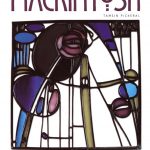 Scottish architect, designer and artist Charles Rennie Mackintosh is now a well-known name and a major draw for the tourist industry in Glasgow with several of his buildings still existing, as well as his designs for Tea Rooms. However, his work was not always well received and following some early success, which included his architectural masterpiece the Glasgow School of Art, his prospects floundered. His work was increasingly unfashionable as Glasgow turned to Neoclassicism and he found himself struggling to secure commissions. In this lecture we track him from that early success in his native Glasgow through the years of doubt and struggle and ultimately to the South of France where he enjoyed the last few years of his life travelling with his wife and collaborator Margaret and reinvented himself as a water colour painter. With a wonderful array of beautifully designed buildings, furniture, and interiors to enjoy along the way, we will explore how such early promise turned to disappointment and Mackintosh became the archetypal misunderstood artist.
Scottish architect, designer and artist Charles Rennie Mackintosh is now a well-known name and a major draw for the tourist industry in Glasgow with several of his buildings still existing, as well as his designs for Tea Rooms. However, his work was not always well received and following some early success, which included his architectural masterpiece the Glasgow School of Art, his prospects floundered. His work was increasingly unfashionable as Glasgow turned to Neoclassicism and he found himself struggling to secure commissions. In this lecture we track him from that early success in his native Glasgow through the years of doubt and struggle and ultimately to the South of France where he enjoyed the last few years of his life travelling with his wife and collaborator Margaret and reinvented himself as a water colour painter. With a wonderful array of beautifully designed buildings, furniture, and interiors to enjoy along the way, we will explore how such early promise turned to disappointment and Mackintosh became the archetypal misunderstood artist.
Lecturer: Rosalind Whyte has a BA and an MA from Goldsmith’s College and an MA (distinction) from Birkbeck College. 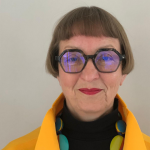 She is an experienced guide at Tate Britain, Tate Modern, The Royal Academy and Greenwich. She lectures widely at The Tate and to independent Arts societies and on cruises.
She is an experienced guide at Tate Britain, Tate Modern, The Royal Academy and Greenwich. She lectures widely at The Tate and to independent Arts societies and on cruises.
12 Nov 2025 — Mixed doubles
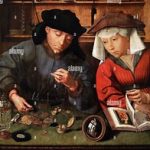 What is the origin of the double portrait? Are the sitters posed in a single image or in two separate portraits meant to hang together? And what happens if one of the portraits is lost? What do these images tell us about the subjects for example: is there a power struggle going on between the two figures? Is there male/female hierarchy? Are same-gender double portraits simply a modern notion or have they been around much longer? We answer these questions fully through a wide-ranging selection of images from mediaeval donor portraits to the 20th Century. All are linked by the double portrait.
What is the origin of the double portrait? Are the sitters posed in a single image or in two separate portraits meant to hang together? And what happens if one of the portraits is lost? What do these images tell us about the subjects for example: is there a power struggle going on between the two figures? Is there male/female hierarchy? Are same-gender double portraits simply a modern notion or have they been around much longer? We answer these questions fully through a wide-ranging selection of images from mediaeval donor portraits to the 20th Century. All are linked by the double portrait.
Lecturer: Alice Foster has lectured at the Oxford University Department of Continuing Education since 1998.  She lectures regularly at the Ashmolean Museum and the Oxfordshire Museum in Woodstock. Alice organises History of Art Study Days and regular weekly classes in Oxfordshire and Worcestershire. She became an Arts Society lecturer in 2004 and has lectured in Britain and Europe. Most recently in Australia and New Zealand. Alice is a residential lecturer on the Isle of Iona specialising in Scottish Art.
She lectures regularly at the Ashmolean Museum and the Oxfordshire Museum in Woodstock. Alice organises History of Art Study Days and regular weekly classes in Oxfordshire and Worcestershire. She became an Arts Society lecturer in 2004 and has lectured in Britain and Europe. Most recently in Australia and New Zealand. Alice is a residential lecturer on the Isle of Iona specialising in Scottish Art.
NB Not an official TASO Visit, but it was mentioned that our lecturer, Alice Foster, is the guest lecturer at a Residential Course, From Kells to Cadell, at the Argyll Hotel on the Isle of Iona. The course involves two lectures each morning followed by optional trips to Staffa, the Abbey and sites of some of Cadell’s Scottish colourist paintings. The course runs from Friday 5th June – Wednesday 10th June 2026. More information in the News/Events section of the Argyll Hotel, Iona, and to book contact reception@argyllhoteliona.co.uk.
10 Dec 2025 — The art of trickery: how magicians are seen in paintings, prints and cartoons
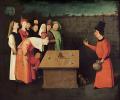 This talk is on how magicians have appeared in art throughout the centuries, whether in paintings, satirical prints or early cartoons. Early artists used magicians to symbolise the mysterious and the unknown, associating them with astrology. In the 16th century, Pieter Bruegel and Hieronymus Bosch produced two of the most striking pictures of the conjurer performing the cup and balls trick. The 18th & 19th centuries saw a proliferation in engravings and lithographs showing the magician both indoors and out in the street. Bringing it up to date are examples of how cartoonists and satirists delight in linking politicians with skulduggery, with images of them featuring “sawing a woman in half” or “pulling a rabbit out of a hat”. We will even have a performance some of the tricks being talked about!.
This talk is on how magicians have appeared in art throughout the centuries, whether in paintings, satirical prints or early cartoons. Early artists used magicians to symbolise the mysterious and the unknown, associating them with astrology. In the 16th century, Pieter Bruegel and Hieronymus Bosch produced two of the most striking pictures of the conjurer performing the cup and balls trick. The 18th & 19th centuries saw a proliferation in engravings and lithographs showing the magician both indoors and out in the street. Bringing it up to date are examples of how cartoonists and satirists delight in linking politicians with skulduggery, with images of them featuring “sawing a woman in half” or “pulling a rabbit out of a hat”. We will even have a performance some of the tricks being talked about!.
Lecturer: Ian Keable gained a First Class degree from Oxford University, qualified as a Chartered Accountant and then became a professional magician.  He has published several books including his latest work: The Century of Deception: The Birth of Hoax in Eighteenth Century England. He now divides his time between performing magic, giving talks and research and writing. He is a member of the Inner Magic Circle and was appointed Archivist of The Magic Circle.
He has published several books including his latest work: The Century of Deception: The Birth of Hoax in Eighteenth Century England. He now divides his time between performing magic, giving talks and research and writing. He is a member of the Inner Magic Circle and was appointed Archivist of The Magic Circle.
14 Jan 2026 — The three great game changers of 19th Century opera
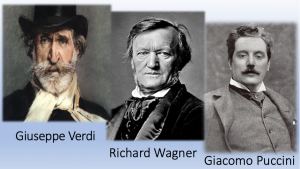 The world of opera is full of remarkable contributors, great game-changers who leave the stage in a completely different place from the one they found. In the 19th Century three such men revolutionised the art form, in three very different ways: Verdi, Wagner and Puccini. From the romantic heart-breakers of La Traviata via the magic and mystery of the Ring Cycle to the breath-taking melodramatic tear-jerkers of Tosca and La Boheme. Enjoy their journeys and innovative, dynamic and thrilling theatricality which highlights so much of their work.
The world of opera is full of remarkable contributors, great game-changers who leave the stage in a completely different place from the one they found. In the 19th Century three such men revolutionised the art form, in three very different ways: Verdi, Wagner and Puccini. From the romantic heart-breakers of La Traviata via the magic and mystery of the Ring Cycle to the breath-taking melodramatic tear-jerkers of Tosca and La Boheme. Enjoy their journeys and innovative, dynamic and thrilling theatricality which highlights so much of their work.
Lecturer: Jamie Hayes Jamie graduated as a Stage Manager after training at RADA and worked for Glyndebourne, Bristol Old Vic and BBC.  He moved on to RSC and Kent Opera and started directing. He has worked on many productions in the UK and overseas in Reykjavik, Malta and Melbourne. His career has included Miss Saigon in the West End and on Broadway as well as working With British Youth Opera and with young opera singers. Jamie has also lectured for various leading cruise ship companies.
He moved on to RSC and Kent Opera and started directing. He has worked on many productions in the UK and overseas in Reykjavik, Malta and Melbourne. His career has included Miss Saigon in the West End and on Broadway as well as working With British Youth Opera and with young opera singers. Jamie has also lectured for various leading cruise ship companies.
11 Feb 2026 — Peru: the Incas and their predecessors seen through their art and textiles
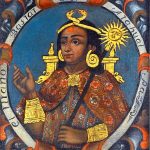 Ancient Peruvian burial grounds have yielded dazzling goldwork, fine ceramic vessels and some of the richest textiles in the world. Sumptuously woven garments, preserved for 2,000 years by the Paracas desert, display a profusion of embroidered designs. For the Incas, who ruled the Andes of South America after AD1200, the textile arts took precedence over other media. Chosen women devoted their lives to weaving for the Sun and the Inca State. Today, nearly 500 years after the Spanish conquest, textiles remain central to Andean life. Contemporary Peruvian textiles are displayed during this lecture if travel arrangements allow.
Ancient Peruvian burial grounds have yielded dazzling goldwork, fine ceramic vessels and some of the richest textiles in the world. Sumptuously woven garments, preserved for 2,000 years by the Paracas desert, display a profusion of embroidered designs. For the Incas, who ruled the Andes of South America after AD1200, the textile arts took precedence over other media. Chosen women devoted their lives to weaving for the Sun and the Inca State. Today, nearly 500 years after the Spanish conquest, textiles remain central to Andean life. Contemporary Peruvian textiles are displayed during this lecture if travel arrangements allow.
Lecturer: Chloe Sayer is a freelance specialist in the arts and culture of Latin America. 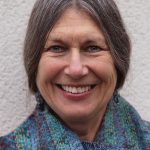 She has lectured in the UK and overseas. She has curated exhibitions and assisted on TV documentaries for the BBC and Channel 4. Chloe has made collections in Mexico and Belize for the British Museum. In 2016 she was awarded the Ohtli Medal for her long standing commitment to Mexican culture. Chloe has many publications to her name including books, articles in travel guides, magazines, and newspaper.
She has lectured in the UK and overseas. She has curated exhibitions and assisted on TV documentaries for the BBC and Channel 4. Chloe has made collections in Mexico and Belize for the British Museum. In 2016 she was awarded the Ohtli Medal for her long standing commitment to Mexican culture. Chloe has many publications to her name including books, articles in travel guides, magazines, and newspaper.
11 Mar 2026 — Beauty of the Earth: the art of May and William Morris
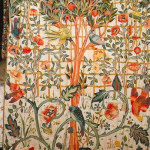 The designs of William and his daughter May Morris abound with greenery and growing things. Orchards, hedgerows, kitchen gardens and wild woods all provided inspiration for their art and lectures.
The designs of William and his daughter May Morris abound with greenery and growing things. Orchards, hedgerows, kitchen gardens and wild woods all provided inspiration for their art and lectures.
Lecturer: Suzanne Fagence Cooper is an art historian working on the 19th and 20th Century British Art. 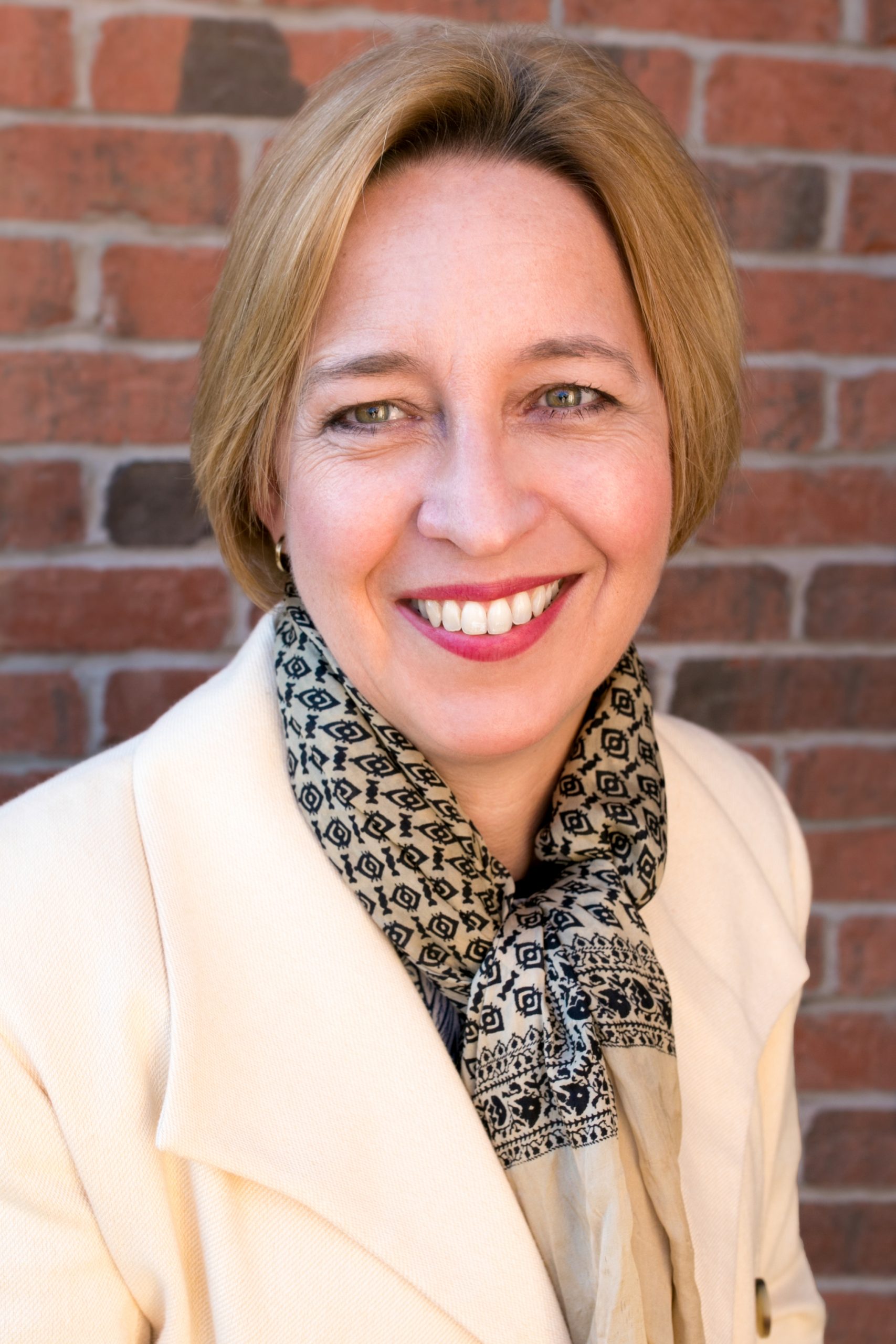 She was a curator and Research Fellow at the V&A Museum and is currently Honorary Visiting Fellow at the University of York. Suzanne has curated major exhibitions on John Ruskin and JMW Turner, and is planning a new exhibition on William Morris and his family. Suzanne and author of various publications as well as working as a consultant on TV and film projects. She leads art tours in England and Europe. Her latest book is How we might live: At Home with Jane and William Morris.
She was a curator and Research Fellow at the V&A Museum and is currently Honorary Visiting Fellow at the University of York. Suzanne has curated major exhibitions on John Ruskin and JMW Turner, and is planning a new exhibition on William Morris and his family. Suzanne and author of various publications as well as working as a consultant on TV and film projects. She leads art tours in England and Europe. Her latest book is How we might live: At Home with Jane and William Morris.
15 Apr 2026 — Hacksilver: decorative arts of the Viking Age
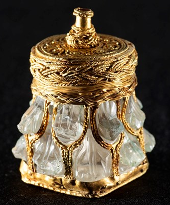 Far from being the Dark Ages, the period between the end of the Roman Empire in Europe and the artistic riches of the early Medieval era saw the birth of a distinctive Germanic culture, which in the British Isles can be seen in the decorative arts of the Anglo-Saxon and Norse Vikings. From about 480 CE, with farmers and craftsmen from north west Germany beginning to settle in post-Roman Britain, and again from 760 CE, when Norse raiders began to attack and then settle in these islands, we see a range of intricate carvings and exquisite metal work. In some cases, borrowed from or influencing the Celtic art they encountered across Britain and Ireland, these artefacts and decorations display a refined artistic creativity combined with craftsmanship at a high level. Justin discusses the styles and meanings of many of the artworks found in the hoards and ancient buildings, and relates them to their origins in Scandinavia.
Far from being the Dark Ages, the period between the end of the Roman Empire in Europe and the artistic riches of the early Medieval era saw the birth of a distinctive Germanic culture, which in the British Isles can be seen in the decorative arts of the Anglo-Saxon and Norse Vikings. From about 480 CE, with farmers and craftsmen from north west Germany beginning to settle in post-Roman Britain, and again from 760 CE, when Norse raiders began to attack and then settle in these islands, we see a range of intricate carvings and exquisite metal work. In some cases, borrowed from or influencing the Celtic art they encountered across Britain and Ireland, these artefacts and decorations display a refined artistic creativity combined with craftsmanship at a high level. Justin discusses the styles and meanings of many of the artworks found in the hoards and ancient buildings, and relates them to their origins in Scandinavia.
Lecturer: Justin Reay had a long career in business management after officer service in the Royal Navy. 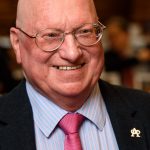 He was one of the early consultants in knowledge management and eLearning. Justin then studied The History and Art and Architecture at Oxford and then Islamic Art and classical culture in Athens. He has since worked at the Bodleian Library advising graduate students and editing manuscripts. He is now qualified as a teacher and tutor teaching History of Art and classical studies in Oxford. Justin is a frequent lecturer for Arts Societies.
He was one of the early consultants in knowledge management and eLearning. Justin then studied The History and Art and Architecture at Oxford and then Islamic Art and classical culture in Athens. He has since worked at the Bodleian Library advising graduate students and editing manuscripts. He is now qualified as a teacher and tutor teaching History of Art and classical studies in Oxford. Justin is a frequent lecturer for Arts Societies.
13 May 2026 — The birth of Abstraction: Wassily Kandinsky
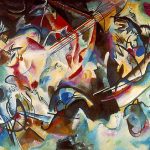 We will look at paintings by Wassily Kandinsky, one of the pioneers of abstract modern art and at the origins of his first abstractions as well as at other Russian artists who developed non-objective art in Russia.
We will look at paintings by Wassily Kandinsky, one of the pioneers of abstract modern art and at the origins of his first abstractions as well as at other Russian artists who developed non-objective art in Russia.
Lecturer: Natalia Murray was born in St. Petersburg where she obtained a BA and MA in the History of Art before undertaking her PhD at the Hermitage Museum. 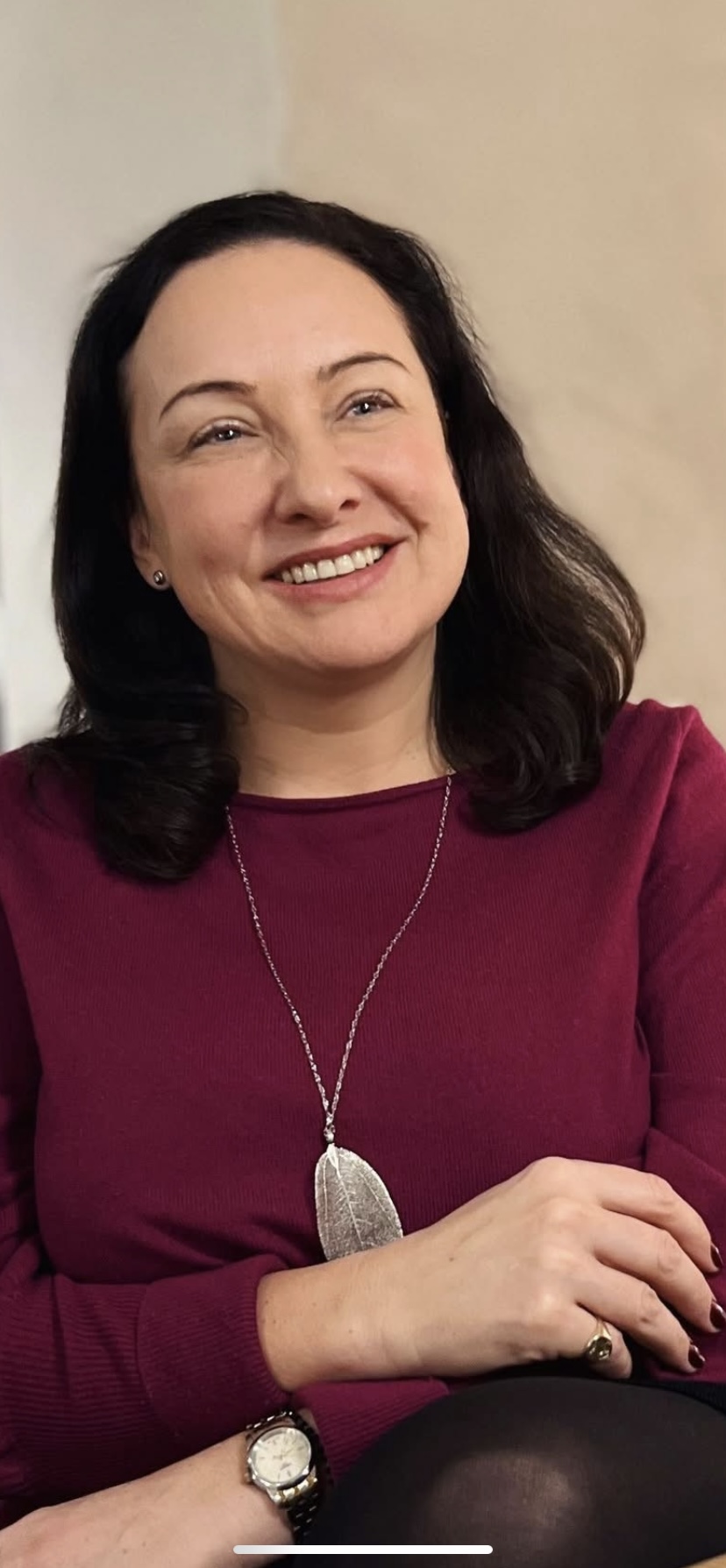 In 2015 she was awarded a further PhD at The Courtauld Institute of Art. Natalia works as an independent curator and as an associate lecturer at The Courtauld, where she teaches an MA course on the role of exhibitions and private collections in Europe 1863-1930. In 2017 she curated a major exhibition Revolution, Russian Art at the Royal Academy. Natalia is currently curating a number of exhibitions including the Birth of New Art. She is author of several books and articles on 19th and 20th Century Art and has contributed to films and programmes on BBC Radio 4 and the World Service. She has lectured for the Arts Society for some time, including in New Zealand and Europe.
In 2015 she was awarded a further PhD at The Courtauld Institute of Art. Natalia works as an independent curator and as an associate lecturer at The Courtauld, where she teaches an MA course on the role of exhibitions and private collections in Europe 1863-1930. In 2017 she curated a major exhibition Revolution, Russian Art at the Royal Academy. Natalia is currently curating a number of exhibitions including the Birth of New Art. She is author of several books and articles on 19th and 20th Century Art and has contributed to films and programmes on BBC Radio 4 and the World Service. She has lectured for the Arts Society for some time, including in New Zealand and Europe.
10 June 2026 — The tale of Vanity Fair: Constable’s Treslove portraits rediscovered
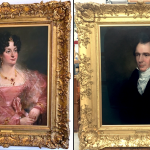 Until 2019 the whereabouts of Constable’s sumptuous portrait of his neighbour in Charlotte Street, Mrs Emily Treslove, 1826-29 (Private Collection) was unknown. It had come down through five generations of her family to the present owners along with a volume of her diaries and a jewel from the flashy parure of garnet and pearl jewellery that she wears. This painting of Emily in all her finery is arguably one of Constable’s finest portraits. Following its discovery, a completely unknown companion portrait of her husband Thomas Treslove QC (1775-1841) came to light, also in the family collection. Sarah cleaned, restored and examined the paintings; she also had access to the key diary volumes and the garnet jewel. Through the restoration and technical study of Constable’s paintings and his letters, we see how this widens our understanding of portrait practice and the frivolity of the nouveau riche in the early 19th century.
Until 2019 the whereabouts of Constable’s sumptuous portrait of his neighbour in Charlotte Street, Mrs Emily Treslove, 1826-29 (Private Collection) was unknown. It had come down through five generations of her family to the present owners along with a volume of her diaries and a jewel from the flashy parure of garnet and pearl jewellery that she wears. This painting of Emily in all her finery is arguably one of Constable’s finest portraits. Following its discovery, a completely unknown companion portrait of her husband Thomas Treslove QC (1775-1841) came to light, also in the family collection. Sarah cleaned, restored and examined the paintings; she also had access to the key diary volumes and the garnet jewel. Through the restoration and technical study of Constable’s paintings and his letters, we see how this widens our understanding of portrait practice and the frivolity of the nouveau riche in the early 19th century.
Lecturer: Sarah Cove is an accredited paintings conservator, restorer, technical art historian and lecturer with almost 40 years working on paintings for the heritage and private sectors. She lives and works in Cornwall but also has a permanent base in London. 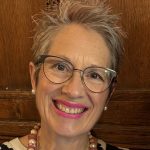 As a conservator she specialises in British portraits, 19th & 20th Century landscapes, oil sketches and on paper and board. In 1986 Sarah founded the Constable Research Project and is an authority on his materials and techniques. She has appeared on several TV programmes including Fake or Fortune where she was instrumental in the discovery of three “lost” Constables. Sarah has lectured widely for the Arts Society and at many major institutions. Her interests include Jacobean and Tudor portraiture as well as Newlyn and St. Ives School.
As a conservator she specialises in British portraits, 19th & 20th Century landscapes, oil sketches and on paper and board. In 1986 Sarah founded the Constable Research Project and is an authority on his materials and techniques. She has appeared on several TV programmes including Fake or Fortune where she was instrumental in the discovery of three “lost” Constables. Sarah has lectured widely for the Arts Society and at many major institutions. Her interests include Jacobean and Tudor portraiture as well as Newlyn and St. Ives School.
Constable pictures: strict copyright. Not to be copied, downloaded or otherwise reproduced.
16 Sep 2026 — AGM and The Century of gold: Spanish art in the age of Velazquez
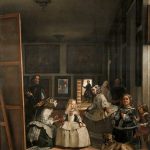 In the 16th & 17th centuries, Spain rose as the great superpower with an empire spanning the globe. This vast wealth, alongside the renewed catholic fervour of the counter reformation kickstarted the Spanish “siglo d’oro”, literally the Century of Gold – the great flourishing of painting, sculpture, literature, and music. The lecture explores this period looking at the historical movement and the vast array of art before focusing on the work of the greatest painter of the age – Diego Velazquez
In the 16th & 17th centuries, Spain rose as the great superpower with an empire spanning the globe. This vast wealth, alongside the renewed catholic fervour of the counter reformation kickstarted the Spanish “siglo d’oro”, literally the Century of Gold – the great flourishing of painting, sculpture, literature, and music. The lecture explores this period looking at the historical movement and the vast array of art before focusing on the work of the greatest painter of the age – Diego Velazquez
Lecturer: Isabelle Kent is an academic and educator specialising in the Baroque with a particular focus on Spain and its empire. 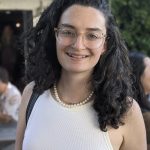 She received a BA and MPhil in the History of Art from Trinity College Cambridge, where she is currently completing her PhD on the art of Velazquez and Zurbarán. Isabelle has worked as a curatorial assistant at the Wallace Collection and in 2020 her book on Murillo was published. Isabelle is an expert guide for a travel company, leading groups in Spain and beyond. She teaches regularly at the V&A, Royal Academy, Chelsea Arts Club and University of Cambridge.
She received a BA and MPhil in the History of Art from Trinity College Cambridge, where she is currently completing her PhD on the art of Velazquez and Zurbarán. Isabelle has worked as a curatorial assistant at the Wallace Collection and in 2020 her book on Murillo was published. Isabelle is an expert guide for a travel company, leading groups in Spain and beyond. She teaches regularly at the V&A, Royal Academy, Chelsea Arts Club and University of Cambridge.
